16 Corner
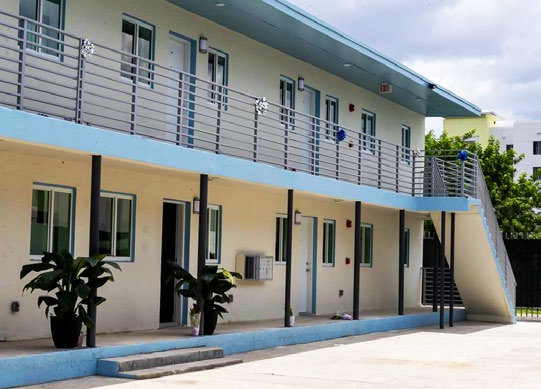
Keys to Success
Pre-existing relationships – The partners were able to move quickly to acquire this high-density structure by establishing a relationship between the financier and developer before a property was identified. Plus, the developer’s existing relationship and responsiveness to local government helped build community support.
Financing for quick acquisition – The Omni Community Redevelopment Agency (CRA)’s ability to issue Tax Increment Financing (TIF) provided the needed capital to overcome one of the most challenging aspects related to preserving unsubsidized affordable SMMF properties: acquisition. While access to TIF can be rare, quick capital for acquisition exists in a variety of forms from market to market (e.g., local housing trust funds, philanthropic funding, predevelopment loan funds).
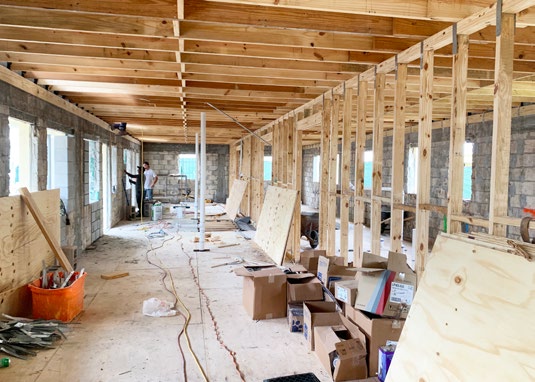
Reducing transaction costs – Increasing the amount and reducing the frequency of draws during construction reduced administrative burdens and helped keep the project on schedule.
Maintaining rents and rotating construction to prevent displacement – The financing, including public subsidy, ensured partners could maintain existing rent levels. By finding a building that had a 20 percent vacancy rate and rotating rehabilitation activities from unit to unit, project partners able to house all current residents during renovations.
Continuity of property management – By retaining the services of the previous property manager, project partners gained a nuanced understanding of the property and additional buy-in from the property’s tenants and neighborhood residents.
Property Identification
The Omni CRA boundary stretches across Historic Overtown, which is bordered by a strong real estate market on one side and a weaker market on the other. Real estate speculation had intensified in the area as a result of these market conditions and the neighborhood’s proximity to activity centers, major transportation systems, and anchor institutions like the Adrienne Arsht Center for the Performing Arts. In the face of that speculation, staff at the Omni CRA were constantly seeking opportunities to maintain affordable options for residents in the neighborhood, regularly scouring online databases of real estate listings. When the 16 Corner properties came on the market, staff at the Omni CRA leapt at the opportunity. Staff at the Omni CRA and The Vagabond Group had previously discussed collaborating on affordable housing preservation. The property stood out as an ideal candidate to launch this partnership. One of the primary selling points for 16 Corner was the site’s existing density, which was higher than would be allowable for new construction in the neighborhood, since zoning had been updated. Partners were able to redevelop the buildings as one project and achieve economies of scale. The previous owner was eager to sell the property, given the poor condition of the property. The Vagabond Group and Omni CRA purchased the property for $3,700,000.
Relationship Building
Strong relationships were key to 16 Corner’s success—notably the existing relationship between the developer and financier, long-standing trust between public-sector decisionmakers and the developer, and responsiveness to community concerns. Before the property was identified, staff at the Omni CRA and The Vagabond Group had expressed interest in working together, allowing them to quickly collaborate when the property became available. The project was initially met with some skepticism by local decisionmakers, but The Vagabond Group’s reputation for historic renovation and high- quality developments helped to ease these concerns.
Some residents expressed apprehension about a for-profit developer to purchasing land in the neighborhood. Hearing and acknowledging the concerns of neighborhood residents, the project partners approached the Mt. Zion CDC to work more directly and collaboratively with neighborhood residents. The Mt. Zion CDC agreed to join the project in exchange for a 7.5 percent ownership stake in the value of the property at the end of its 30-year affordability covenant.
Financing The Development
As one of the lead partners on the project, Omni CRA was able to cover the cost of acquisition, which is often one of the greatest barriers to preserving unsubsidized affordable SMMF in stronger real estate markets. Using its discretion over TIF funds, Omni CRA issued a forgivable loan for the acquisition cost. The loan would be forgiven after the property satisfied a 30-year affordable housing covenant. The only public subsidy came from the Omni CRA (see Table 1). No additional local, state or federal funds were used to preserve 16 Corner. According to staff at the Omni CRA, their ability to avoid the administrative costs of other public financing helped keep costs low and contributed to the project’s overall success.
The Vagabond Group was also capable of donating its developer fee to help close the gap. The 16 Corner project is a testament to the value of atypical sources of public subsidy to support affordable housing, securing cheap equity early, and striving for a simplified capital stack.
TABLE 1. SOURCES
|
PUBLIC SOURCES |
Total |
Per Unit |
|
Omni CRA* |
$3,800,000 |
$86,364 |
|
PRIVATE SOURCES |
|
|
|
Bank financing |
$1,800,000 |
$40,909 |
|
Developer equity |
$450,000 |
$10,227 |
|
Donated developer fee |
$550,000 |
$12,500 |
|
Shortfall |
$754,248 |
$17,142 |
|
TOTAL |
$7,354,248 |
$167,142 |
Rehabilitation
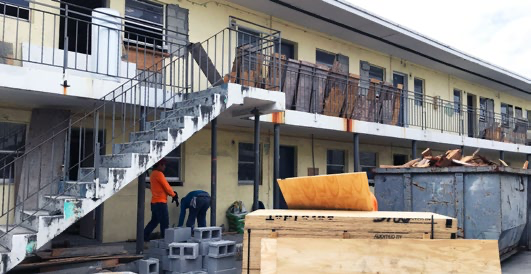
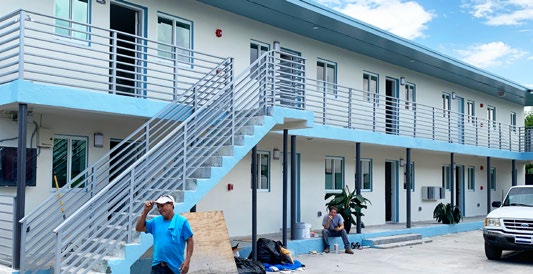
The Vagabond Group determined the need for a gut rehabilitation of the properties prior to starting. Figure 2 shows the extent of repairs needed to the exterior alone. The buildings were 80 percent occupied at the time of purchase, and the project partners set a goal to not displace any tenants during the renovations.
Rehabilitation took roughly 10 months. The hard costs per unit were $67,000. The most expensive elements were general contractor fees, new electrical and plumbing systems and structural repairs. To improve the property’s resilience, the buildings were updated to include storm-certified roofs, impact windows, and hurricane straps. To reduce utility costs for residents and increase the value of the property, the partners used materials that would perform better over the property’s lifecycle, including more energy-efficient insulation and water-resistant drywall.
The partners were able to use their construction funds more efficiently by allowing for larger draw submissions, reducing the frequency of draws and in turn lowering transaction costs. Larger, less frequent draws reduced the potential for construction delays and made the management of payment applications more efficient. Using open- book accounting ensured transparency on the project’s finances in- between draws.
To prevent displacement among current residents, the partners temporarily relocated the tenants to other units onsite while their units were rehabilitated.
TABLE 2. USES
|
|
Total |
Per Unit |
|
Purchase price |
$3,700,000 |
$84,091 |
|
Renovations |
$2,000,000 |
$45,455 |
|
Donated developer Fee |
$550,000 |
$12,500 |
|
Carrying costs (18 months to stabilization) |
$350,000 |
$7,955 |
|
Shortfall |
$754,248 |
$17,142 |
|
TOTAL |
$7,354,248 |
$167,142 |
Property Management
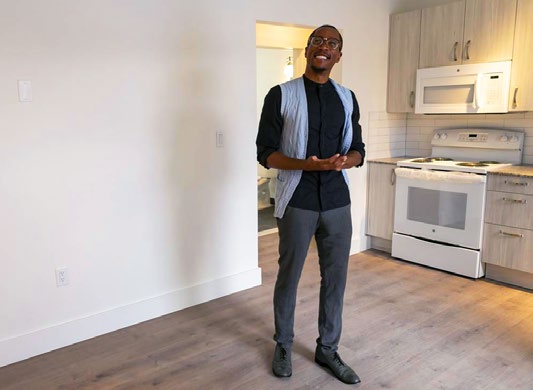 As the owner of the property, The Vagabond Group oversees property management. They opted to retain the property manager who had been hired by the previous owner. Given his knowledge of the property, the property manager was able to assist with the rehabilitation process, including identifying and prioritizing things to fix or improve. He had an established relationship with the tenants and broader community and knew how to work well with them. This partnership resulted in multiple property improvements that had a positive impact on residents’ quality-of-life, including increasing the frequency of trash collection, adding WiFi to all apartments, and installing individual water meters.
As the owner of the property, The Vagabond Group oversees property management. They opted to retain the property manager who had been hired by the previous owner. Given his knowledge of the property, the property manager was able to assist with the rehabilitation process, including identifying and prioritizing things to fix or improve. He had an established relationship with the tenants and broader community and knew how to work well with them. This partnership resulted in multiple property improvements that had a positive impact on residents’ quality-of-life, including increasing the frequency of trash collection, adding WiFi to all apartments, and installing individual water meters.
The 16 Corner project serves as an excellent example of how to improve the quality an unsubsidized affordable SMMF property without raising rents, in a strong real estate market.
Sources
- Interview with Adam Old, Director of Policy and Planning, The Omni Community Redevelopment Agency, 2019.
- Interview with Avra Jain, CEO, The Vagabond Group LLC, 2019.
- Open Source: The Vagabond Group & Omni Community Redevelopment Agency (CRA) Public-Private Affordable Housing. (2019)
- The Vagabond Group and Omni Community Redevelopment Agency. Case Study: The Vagabond Group & Omni Community Redevelopment Agency (CRA) Public-Private Affordable Housing Partnership.
- Viglucci, Andres. (2019) “These fully redone apartments may solve Miami’s housing crisis. The rent stays cheap.” Miami Herald.